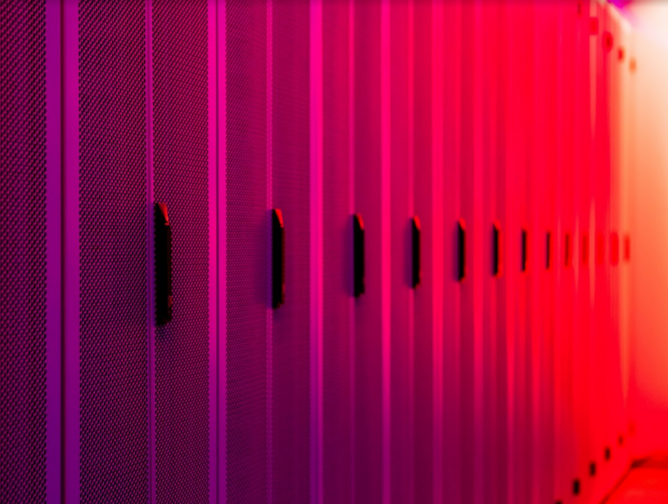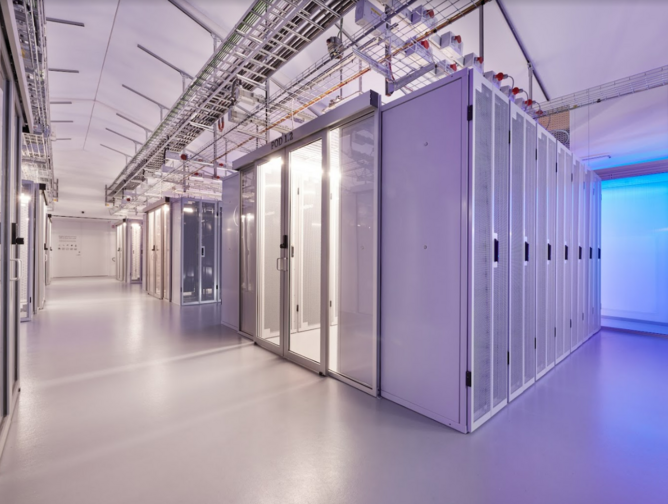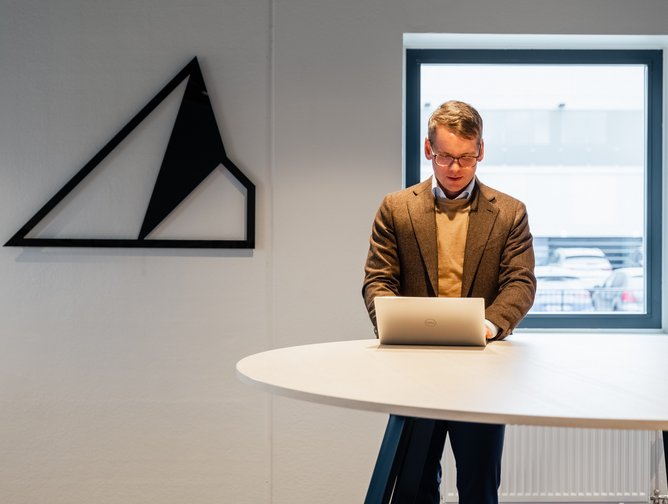Magnús Kristinsson, atNorth DCs' CEO, on investment & growth
atNorth was established back in 2009, and from its inception it has championed an entrepreneurial driving spirit.
“We basically consider ourselves to be a startup company,” says Magnús Kristinsson, CEO of atNorth, “and in December 2021, we were acquired by Partners Group, which is one of the largest private market firms in the world. What this means for us is that we will need to find a new balance between the institutional and the startup spirit, as this move opens up many opportunities for us.”
atNorth is the largest colocation Data Centre (DC) operator in Iceland, recognised for its high-density computing technology coupled with its dedication to sustainability. The DC company is headquartered in Reykjavik and already has several operations across Sweden, the Netherlands, Belgium and the United Kingdom ‒ despite its early start-up ethos, its acquisition by Partners Group has bestowed atNorth with access to a completely different level of funding, set to further fuel its quickening expansion and growth.
This is the quid pro quo that sustainability-focused and start-up-spirited DC’s must make when such large investment is the key consideration. In fact, such a move provides opportunities to achieve goals that may have seemed long out-of-reach, but presently have become a reality that will, in all likelihood, see atNorth achieve goals that were not even possible for the DC company just a few short years ago.
“Our partner ecosystem is essential to us,” says Kristinsson, “since we are not a big organisation. We have a supply chain of key partners that we work with, and we would not be able to build our DCs, nor service our customers, without it.”
Another one of atNorth’s key partners is Systemair, who they have been working with since 2019 and who provide their DCs with cooling systems and solutions in Iceland’s very cold climate.
Kristinsson is an engineer and has been working in IT since the beginning of this career. Back then, he was a part of Advania ‒ the company that eventually acquired atNorth in 2011. At the time, atNorth was a very small data centre, started by some pioneers that had already realised that DCs in remote locations such as Iceland ‒ where the cold climate could be utilised and there was an abundance of renewable energy ‒ was a great idea, but the business model was just not working.
“We then turned it around and made it into a very successful data company,” says Kristinsson. “At the time, I ran it as a business unit within Advania. But in 2018, I stepped in as full-time CEO, and the growth journey of atNorth really took off. Although I’m the CEO of atNorth, based out of Reykjavik, I spend a lot of time in Stockholm, where we’re building our first DataCentre outside of Iceland.
The first atNorth site, which they acquired back in 2011, is built in an old printing facility.
Given the size of the data and the footprint that they have today, it was a very small site with a capacity of approximately 3MW. Very soon after that, in 2014, they expanded into a new ’Megasite’ where they have access to 80MW running at 100% renewable energy, built on approximately 18,000 SQM of DC space. In 2020, atNorth started the construction of their first data centre outside of Iceland, in Stockholm. The inauguration ceremony of the DC was held in the first week of March, this year.
atNorth has been and will continue to expand into areas outside of Iceland, providing ‘more compute for a better world’, as its slogan goes. Its ambitions are recognised throughout the global DC industry, and it occupies a strategic position in the DC space, having an early vision that would eventually see its successes recognised and its potential endorsed by the approaches of investors and partners from all over the business world.
“Since our inception, we’ve basically been focusing on high-density workloads,” says Kristinsson, “as well as aiming for low latency requirements, workloads in HPC (High Performance Computing), Artificial Intelligence, Deep Learning and Natural Language Processing.”
atNorth’s uniqueness doesn’t arise from one particular USP (Unique Selling Point) like many other DCs ‒ or even companies in general, for that matter.
“I think that what makes us different from other DC companies rests on a whole set of attributes. One of the most important, of course, is our fundamental sustainability focus. All our DCs are built out of materials that are as sustainable as possible. We use renewable energy only, and our DCs are designed with energy-efficiency in mind from the outset. On top of this, our market focus is on workloads that need high rack density and use a lot of electricity.
“One of the main things that sets us apart is that as operators, we are born in IT and don't come from real estate, as many DC operators do. That means that flexibility and the creativity to bring a project to fruition is a central part of our thinking. We also understand that time-to-market is key for our customers, so we are strongly solutions-focused. We not only provide housing for computers ‒ as many other DCs do ‒ but we actually build the computer clusters for our clients, and if needed, we operate them as well.”
atNorth partly provides traditional column high-density racks, but also low-density, too, with all the required ancillary services and, given their flexible nature, can even do build-to-suit projects on their own campuses. Many of their customers, especially those that are using a lot of electricity for computational workloads, want mixed-tiering, which essentially means mixed-redundancy. They may want lower redundancy for the computational workloads for instance, and higher redundancy for net and storage, and they can, and do provide this service.
On top of all of this, atNorth is able to procure, build and operate the computer clusters that their customers would typically host in their DCs. “We are highly flexible,” says Kristinsson, “and are able to cater solutions for very specific client needs all across the spectrum.”
Flexibility is more central to DC companies than is obvious at first glance, especially when it comes to those who cater for fit-outs and customised or made-to-order services such as those provided by atNorth. This flexibility and diversity of needs can be from a physical or digital point of view. Mixed-latency requirements is just one example of how bespoke a client's requirements may be. This flexibility may present in many forms, and a DC company that possesses it, along with its parent attribute, creativity, is far more likely to achieve a certain level of success. The important point is that a client's needs in the DC space can be as varied as business culture itself.
The current demand for atNorth’s services is higher than they’ve ever seen before. This means that they are building-out, based on the same principles, in highly flexible and modular data centre buildings.
“We already have two DCs in the South-West and are currently very busy expanding our DC footprint, building a new site in the North of Iceland,” he says. “Sustainability is at the core of our value proposition; our data centres in Iceland are built on completely renewable energy. There is no other entity even on the grid in Iceland, which is exceptional. I think it's the only country in the world where you can find such conditions and although we already have access to all this renewable energy, we have still been designing our Data Centres so that they use even less energy than all other DCs do. We also select all the building materials very carefully, with the objective of reducing the carbon footprint of our buildings.”
With ever-expanding connectivity demand and supply, big data, the push caused by COVID lockdowns, and an expeditiously evolving technological environment in general, the DC industry is quickly becoming one of the most in-demand technologies in the world. Then there is the concern about a seeming internal tension between such energy needs and a rising consciousness of the need for environmental protection and cultivation.
“Everything is changing in the world of digitalisation,” says Kristinsson. “Our customers need to engage with partners that can provide them with the flexibility to cope with the rapidity of these developments, but also with the increasing demands that they have for sustainable solutions.”
Asked what the next 12 to 18 months look like for atNorth, Kristinsson says: “We will be very busy onboarding new customers, due to accelerating demand, while also fitting out new spaces for our existing customers and finding and constructing new sites for our DCs.”
In-line with this ever-increasing demand, atNorth is seeking to even further expand with a 50MW megasite in the Nordics, that will use 100% green electricity from renewable sources, making it one of the most sustainable and cost-efficient wholesale data centres ever built.
Kristinsson concludes, “the future of the Industry itself will be marked by major growth in Sustainability, Artificial Intelligence, Deep-Learning and High Performance Computing which is the main driver of demand in our space.”






